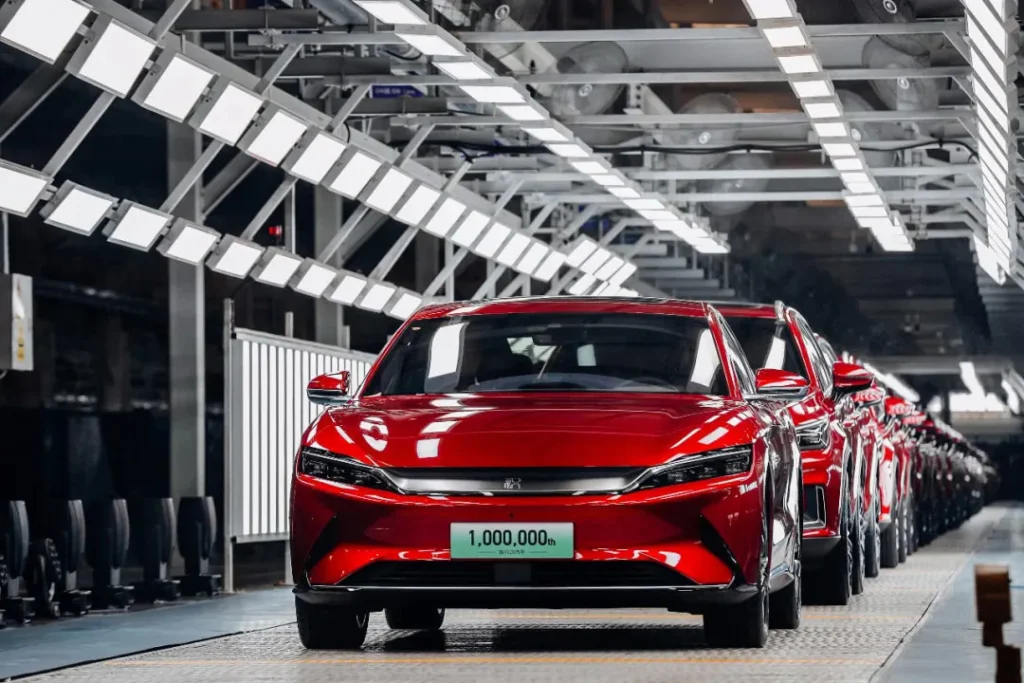Electric Mobility Hits a New Gear in 2024
With electric vehicle (EV) sales recording a 27% year-on-year increase, 2024 marked a turning point in global transportation trends. This surge goes far beyond a numerical milestone—it reflects a deep restructuring of industrial strategy, environmental policy, and buyer behavior.
According to the International Energy Agency (IEA), EV sales rose from around 11 million units in 2023 to 14 million units in 2024, signalling widespread adoption and rising market confidence. As EVs become increasingly visible on roads worldwide, the shift toward electric mobility is now both symbolic and substantive.

What’s Fueling the Surge in EV Adoption?
✅ Policy Push from the Top
Governments around the world played a pivotal role in promoting EV adoption through a mix of regulatory pressure and financial incentives:
- India: The central government’s FAME-II scheme, along with state-specific EV policies, significantly boosted adoption across both fleets and private users.
- United States: Continued support via federal tax credits of up to $7,500 for eligible EVs helped maintain momentum.
- Europe: In preparation for the upcoming 2035 ban on internal combustion engines, automakers ramped up production to meet strict CO₂ targets, which, in turn, pushed EV sales.
✅ Greater Choices, Competitive Prices
In 2024, nearly every major automaker introduced new electric models across various segments—from hatchbacks and sedans to SUVs and performance vehicles. As battery prices fell and manufacturing volumes increased, the cost of EVs dropped significantly.
What was once a premium product is now accessible to a broader demographic.
“It’s the first time we’re seeing EVs priced and marketed like everyday cars, not futuristic gadgets,” said an automotive analyst based in Mumbai.
✅ Charging Infrastructure Growth
The issue of limited charging access began to ease in 2024. In India, the number of public charging stations grew by over 55%, driven by both public and private investments. Globally, brands like Tesla, Shell, and ChargePoint continued expanding fast-charging networks, making intercity travel in EVs more viable than ever.
Markets Leading the Transition
| Country | YoY Growth | EV Market Share (2024) |
|---|---|---|
| China | 32% | 38% |
| Europe (EU) | 21% | 28% |
| USA | 17% | 12% |
| India | 48% | 6.3% |
While China retained its lead in overall volume, India emerged as the fastest-growing EV market, driven by electrification in two-wheelers and commercial fleets in major cities.
Who Dominated the EV Market in 2024?
🚗 BYD and Tesla
Chinese automaker BYD surpassed Tesla in global sales by mid-2024. Aggressive pricing, massive domestic uptake, and entry into emerging markets helped BYD climb to the top spot.
🚙 Tata Motors
In India, Tata Motors continued to dominate with over 70% share in the passenger EV segment. Models like the Nexon EV and Tiago EV drove this success through affordability and trust.
🚗 Hyundai & Kia
With vehicles like the Ioniq 5 and EV6, Hyundai and Kia maintained strong global momentum. The duo struck a balance between performance, innovation, and styling, making them popular in both Europe and North America.
Obstacles Still Ahead
Despite the positive trajectory, several challenges need attention:
- Battery mineral supply chains—especially lithium and cobalt—remain under strain.
- High upfront costs continue to act as barriers in lower-income countries.
- Grid capacity in developing nations needs urgent upgrades to support the growing demand for EV charging.
Experts warn that long-term sustainability depends on energy sourcing, battery recycling, and efficient disposal, not just sales growth.
What to Expect in 2025
The momentum is expected to continue, with 150+ new EV models slated for launch globally in 2025. Technologies like solid-state batteries, wireless charging, and bidirectional power systems are likely to enter mainstream use.
Startups and established automakers alike are also investing heavily in software ecosystems, indicating a future where the digital interface of a car becomes as important as its drivetrain.
Conclusion: A Pivotal Shift in Motion
The 27% rise in EV sales in 2024 isn’t merely a spike—it’s a reflection of global change. From policymakers to automakers to consumers, the journey toward an electric future is accelerating on all fronts.
As affordability improves and infrastructure catches up, EVs are no longer a niche—they’re becoming the default choice for the modern driver.





